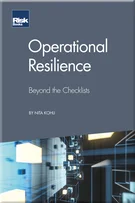Credit Models Past and Present
Credit Models Past and Present
Credit Models Past and Present
Credit Models: Looking to the Future
Predicting Annual Default Rates and Implications for Market Prices
An Ensemble Model for Recovery Value in Default
The Corporate Bond Credit Risk Premium
The Credit Default Swap Risk Premium
The Municipal Build America Bond Risk Premium
Predicting Bank Defaults
Beating Credit Benchmarks
Hedging the Credit Risk Premium
Managing Pension Fund Liabilities
Credit Cycle-dependent Stochastic Credit Spreads and Rating Category Transitions
Managing Systemic Liquidity Risk: Systems and Early Warning Signals
The extension of credit is a display of faith in the future. It involves the exchange of a liquid asset (such as cash) for a documented promise of repayment at a later date. Instruments of credit typically consist of loans, bonds, charge account balances with commercial firms and, latterly, credit default swaps (CDS) and other more complicated financial obligations.11These include structured credit products such as collateralised loan obligations (CLOs), single-tranche collateralised debt obligations (CDOs), credit options, and even counterparty credit risk. A feature of credit instruments is that their expected return profiles are negatively skewed, owing mainly to potential losses from default. That is, one takes on the risk of a low likelihood of a large loss for a more likely steady stream of smaller returns. This chapter will present an historical description of methods developed to analyse the default risk of credit obligors. This first chapter will trace the origins of credit analysis from the fundamental analysis of government bond risk up to the popular structural and risk
Copyright Infopro Digital Limited. All rights reserved.
As outlined in our terms and conditions, https://www.infopro-digital.com/terms-and-conditions/subscriptions/ (point 2.4), printing is limited to a single copy.
If you would like to purchase additional rights please email info@risk.net
Copyright Infopro Digital Limited. All rights reserved.
You may share this content using our article tools. As outlined in our terms and conditions, https://www.infopro-digital.com/terms-and-conditions/subscriptions/ (clause 2.4), an Authorised User may only make one copy of the materials for their own personal use. You must also comply with the restrictions in clause 2.5.
If you would like to purchase additional rights please email info@risk.net










